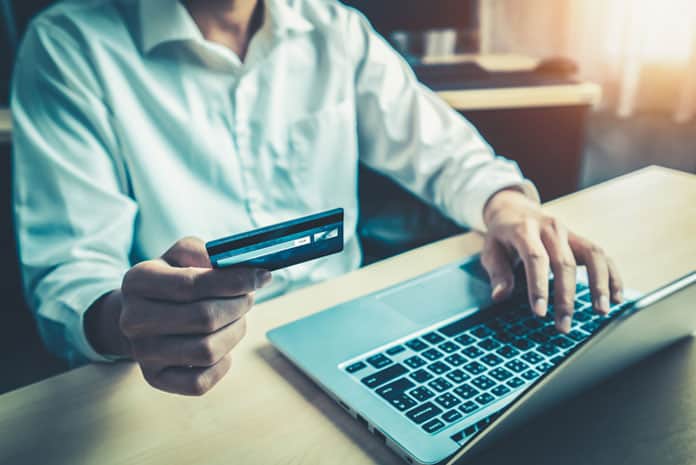The Covid-19 pandemic has led to a tidal wave of changes across industries. The fintech and payments sector has not been excluded from this impact as the coronavirus has driven a clear shift to contactless payments options. The health crisis unfolded a high level of comfort in online shopping as almost overnight, reluctant fence-sitters had to dive into the e-commerce pool.
Several industry reports indicate that the pandemic has played a role in cash-to-card conversion. This has become more prevalent due to the crisis and as a result, mobile wallet transactions are expected to cross INR 100 trillion ($1.36 trillion) by 2024. A survey by YouGov, a global market research company found that 69 percent of surveyed consumers prefer contactless payments which is socially distancing appropriate. Chander Damodaran, CTO, Cloud Engineering, Brillio, talks more about the surge in contactless payments and its future designs. Excerpts.
With the rise in contactless payment adoption, what is the outlook? Can you please share some trends?
The contactless payments industry was already booming even before the pandemic hit us. However, in the past eight to nine months, the Indian digital payments and payment gateways industry has seen robust growth. According to a report the contactless payments market is expected to reach $26.3 billion by 2027, which records 12.9 percent growth. With the increase of 5G, internet penetration in tier 2-3 cities, accessibility, and rapid adoption of smartphones will further augment the adoption of contactless payments in India. Collaboration between the banks and payment gateway providers has increased, making the process simple for consumers to gain access to it. Tap-and-go payment is slowly gaining momentum in India, as these elements the concept of pin-codes and authorisation processes. From a sectorial point of view, physical retail stores, telecom, insurance, edtech, health/pharma, e-commerce have gained majorly and accepted the idea of contactless/digital payment, which was not the case couple of months back. The whole system of the card, wallets, online bank transactions, payment gateways, UPIs, IMPS, and BBPS will see many technological disruptions.
How has this pandemic impacted the retailer priorities in terms of IT investments?
Given the convenience, the penchant for contactless is likely to outlast the pandemic, and businesses (especially retailers) will need to adapt to support this preference. For these digital behaviours to become habitual, retailers will need to continue to invest in digital transformation.
Designing consistent brand experiences across channels, tuned to shifting demand, necessitates a strong digital foundation. To curate successful digital strategies and technology roadmaps, retailers need information about their existing consumers, target market, and their purchasing behaviours. Historical data on customer behaviour pre-pandemic is not applicable anymore, to predict new risks and needs. Therefore, it is critical to invest in new and advanced analytics for risk scoring, new segmentation, and pattern analysis. It also calls for evaluating the digital transformation and modernising the IT to make it more agile and flexible with the help of cloud migration, cloud modernisation, or even re-engineering their solutions. The ability to innovate products and services has enabled enterprises to navigate the crisis and provide better service to their customers, which further spot opportunities for new revenue streams.
How has Brillio endured this change and empowered its customers, could you share a few customer examples?
As a digitally native firm, we address performance issues and enhance customer experiences with a digital roadmap that aligns to the customer’s vision. At Brillio, we empower our customers with the power of data. We enable the right kind of insights to drive better strategic and operational decision-making. For example, BrillioOne flash.ai is a platform that brings multiple set of accelerators by enabling customers to accelerate time from concept to implementation, improve trust on data/analytics, provide better user experience leveraging the data engineering, advanced analytics, and Insights as a service on Azure.
For example, while working with a global payments and technology company, Brillio consulted on innovation and expansion of their digital footprint. The customer required to integrate its channels, digitising methods with respect to banks and payments gateways and enhance their back-end systems to be wired together to provide a seamless experience for its end-user.
What are the challenges faced in contactless payments? How can innovation and agility enable retailers to address them?
The few challenges would be the regulatory norms and data centres to house in country data. Additionally, internet penetration and speed are also hindrances that need to be solved to ensure faster adoption of robust contactless payments future.
As we aim to go back to normalcy, some customers would revert to old shopping behaviours. However, much of the digital transition is here to stay as customers recognise the advantages of digital payments, mobile wallets, and online gift cards. In other words, it is important to consider how to take forced consumer behaviour changes and carry them forward and innovate the customer journey.
















Thanks for Sharing a very Informative Post. Please Share Some More Information like this. I already share your article with my friends and we’re waiting for your next Post.